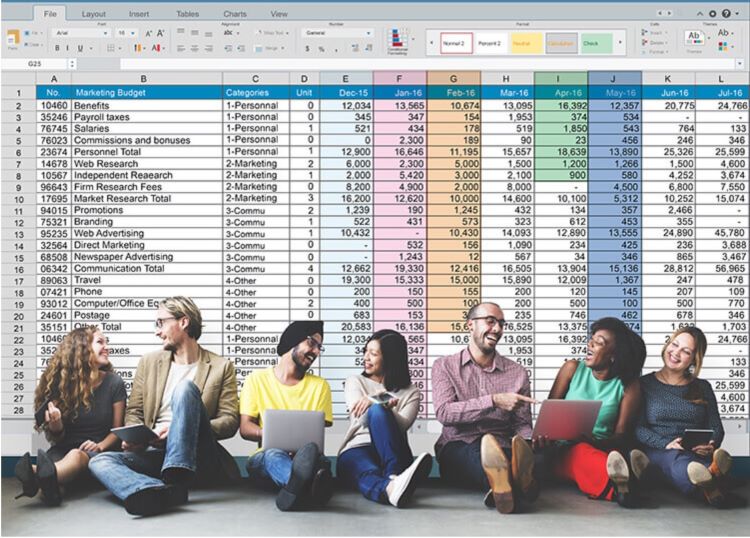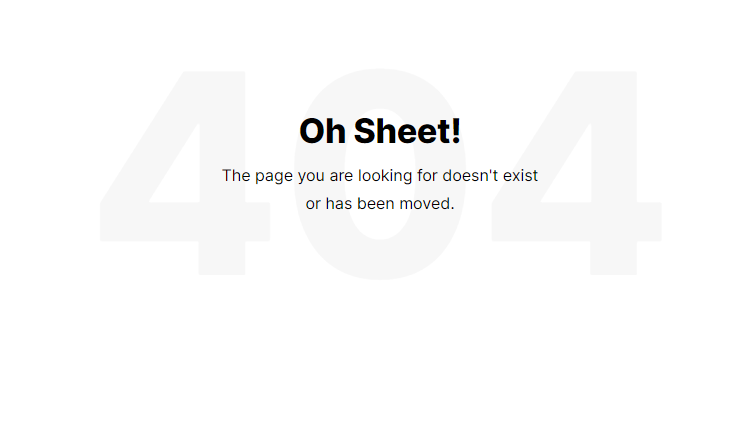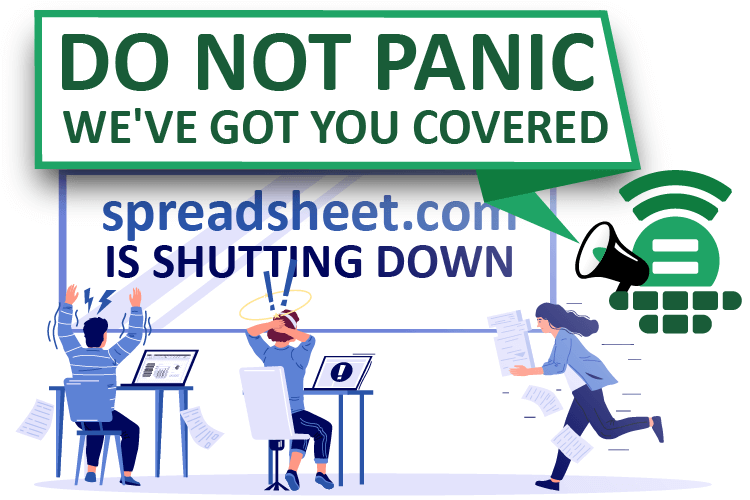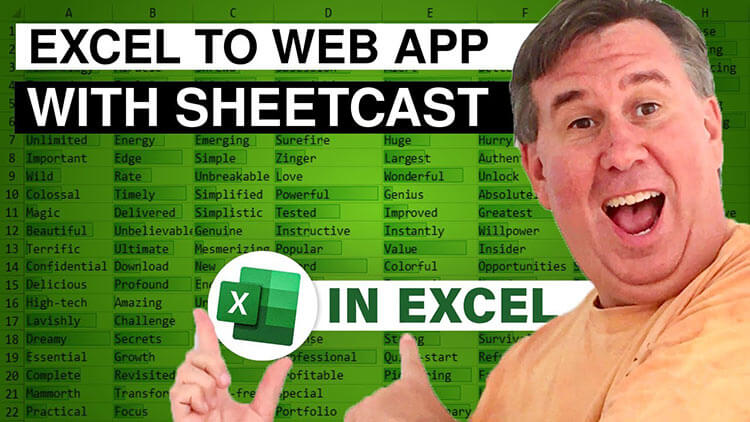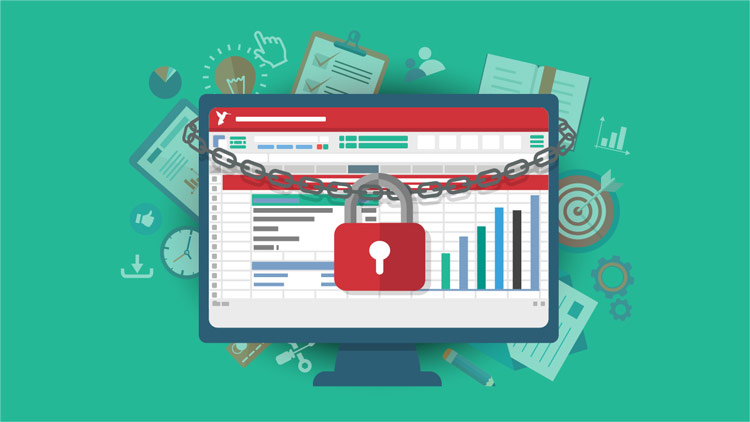Four Ways to Avoid Sheetcast:
Sheetcast enables you to convert Excel to web app directly in Microsoft Office, a tool you already use every day. Sheetcast is affordable, easy to learn, and has hundreds of potential uses (limited only by your imagination).
But, to be honest, Sheetcast is not your only option if you want to add web application development to your business or to your personal skill set. Maybe you don’t need Sheetcast at all to create web apps from Excel spreadsheets. For the sake of full and fair disclosure, we thought we should outline a few alternatives.
1. Hire a full-time web app developer

Assuming you can’t spare an hour or two for you (or your employees) to learn Sheetcast, you might consider adding a web application developer to your staff. With luck, you may be able to attract a talented recent graduate for a fairly modest salary. But, you may want to pony up a bit more to get someone with relevant on-the-job experience.
With a full-time developer on hand, you won’t need to worry about converting Excel spreadsheet to web applications. Instead, you can call your developer into your office, meet for an hour or two to explain your requirements, and then send them off to work their magic. A few days later, you should have a serviceable web app ready to launch in beta. Then, after a suitable period to test its features and look for bugs, you’ll be ready to bring your app online.
Or you could, you know, purchase an affordable license for Sheetcast. With it, anyone with a working knowledge of Microsoft Office can convert Excel spreadsheet to applications in minutes. In other words, anyone in your organization can become a web app developer. Or, who knows? Creating web apps in Excel is so much fun, you may decide to keep the job all to yourself.
2. Earn your own certification in web app development

You’re never too old to learn new skills, right? Why not take some time out from your busy career and study web app development online?
Plenty of unaccredited companies offer online courses for aspiring web developers. Some of them may well be totally worthwhile. But, we’d recommend finding a reputable institution with an established reputation for producing job-ready graduates.
Edmonton’s NAIT (Northern Alberta Institute of Technology) would be an excellent choice. Their Web Application Development certificate program promises to help you “Gain the most up-to-date training, knowledge and skills required to meet today's increasing demand for qualified Web Applications software development professionals.”
Of course, it might prove a bit more challenging than learning Sheetcast. NAIT’s program encompasses eight 14-hour online courses, for a total of 112 hours, whereas you could create apps from Excel in Sheetcast almost immediately. And, although NAIT’s program is cheaper than hiring a web app developer, it’s a great deal more expensive than Sheetcast. Tuition for the eight courses totals $3,900.
3. Hire an on-demand web developer

In today’s global gig economy, thousands of freelance app developers are available for hire online. They’re eager to code for you,on a job by job basis—and often at a fraction of the cost you’d expect to pay.
In fact, the choice can be overwhelming. There’s a dizzying array of web development companies and agencies out there, many of them with spotty track records for client services. It’s hard to know where to begin. Even if you do land a good developer, there’s no guarantee you’ll be able to count on their help if you run into trouble a few months down the road.
Of course, you might decide instead to go with an established company, closer to home. If you go that route, however, keep your wallet and accountant handy. GoodFirms Research estimates the typical cost to build a basic app module at $40k-$50k. (and much more for complex apps).
Spoiler alert: Sheetcast won’t break the bank. And, once you install the Excel add-in, you can convert Excel to web application anytime you like.
4. Share Excel spreadsheets

Of course, the final option is to abandon the idea of web apps entirely. After all, if ordinary shared spreadsheets were good enough for our parents, they should be good enough for us.
But, what happens when you want a client to contribute to your database, but you need to keep portions of your data hidden from their view? What happens when Fred from the marketing department somehow manages to irretrievably break your spreadsheet, or if Meaghan from accounts receivable forgets to save her changes?
The pitfalls of shared spreadsheets are many, and we discuss them in greater detail here
Use Sheetcast to Convert Excel to Web Application
If you use Sheetcast to create web apps from Excel, you can build a clean interface to streamline and simplify your data entry—and to allow simultaneous access by as many users as you’d like.
Upon reflection, there’s no need to seek alternatives to Sheetcast. Don’t avoid it; embrace it. Head to the homepage for more information (and a demo video) and try it for free.
FAQ
1. How can I turn my Excel spreadsheet into a web app?
With Sheetcast, it only takes a few clicks. You upload your Excel file, set access permissions, and publish it online—no coding required.
2. Why would I want to turn Excel into a web app?
Excel is great for one person, but it quickly gets messy when multiple people are involved. A Sheetcast web app makes your spreadsheet easier to share, adds security, and lets your team collaborate from any device.
3. Can I build a web app without learning to code?
Yes. Sheetcast is designed for Excel users who don’t want to touch code. You keep working in Excel while Sheetcast handles the app side.
4. What’s the main difference between an Excel file and a Sheetcast web app?
An Excel file is a document you email or share in the cloud. A Sheetcast web app is software: it has logins, permissions, dashboards, and forms - all powered by your Excel logic.
5. Will my Excel formulas still work in a web app?
Yes. Sheetcast keeps your formulas intact. If you use advanced macros or VBA, some adjustments may be needed, but most spreadsheets convert smoothly.
6. What kinds of web apps can I build with Sheetcast?
You can turn Excel into all sorts of apps, like a calendar, an interactive map, or even a simple tic-tac-toe game, all in just minutes. Other examples include dashboards, surveys, and trackers. See live examples › (insert link https://sheetcast.com/live-examples)
7. How do I share my web app with others?
Instead of sending files back and forth, you simply share a link. Users log in through their browser, and you control who can view, edit, or add data.
8. How long does it take to create a web app with Sheetcast?
For simple spreadsheets, just minutes. For more complex setups, it depends on how much customization you want, but you don’t need to rebuild your Excel file.
9. Is my data safe in Sheetcast?
Yes. Sheetcast provides encrypted connections, role-based permissions, and secure hosting, so your data is protected while your team works online.

